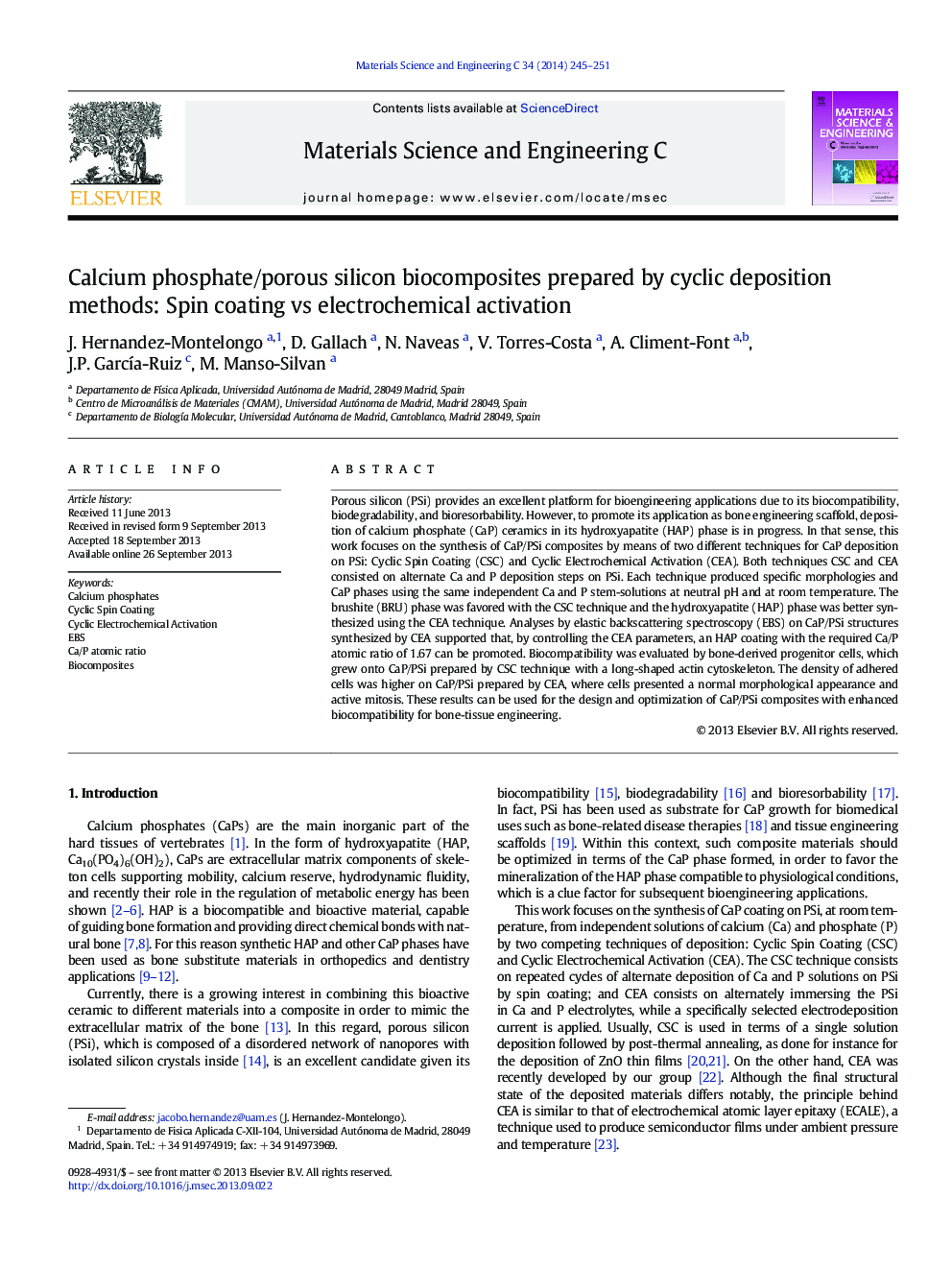| Article ID | Journal | Published Year | Pages | File Type |
|---|---|---|---|---|
| 7870406 | Materials Science and Engineering: C | 2014 | 7 Pages |
Abstract
Porous silicon (PSi) provides an excellent platform for bioengineering applications due to its biocompatibility, biodegradability, and bioresorbability. However, to promote its application as bone engineering scaffold, deposition of calcium phosphate (CaP) ceramics in its hydroxyapatite (HAP) phase is in progress. In that sense, this work focuses on the synthesis of CaP/PSi composites by means of two different techniques for CaP deposition on PSi: Cyclic Spin Coating (CSC) and Cyclic Electrochemical Activation (CEA). Both techniques CSC and CEA consisted on alternate Ca and P deposition steps on PSi. Each technique produced specific morphologies and CaP phases using the same independent Ca and P stem-solutions at neutral pH and at room temperature. The brushite (BRU) phase was favored with the CSC technique and the hydroxyapatite (HAP) phase was better synthesized using the CEA technique. Analyses by elastic backscattering spectroscopy (EBS) on CaP/PSi structures synthesized by CEA supported that, by controlling the CEA parameters, an HAP coating with the required Ca/P atomic ratio of 1.67 can be promoted. Biocompatibility was evaluated by bone-derived progenitor cells, which grew onto CaP/PSi prepared by CSC technique with a long-shaped actin cytoskeleton. The density of adhered cells was higher on CaP/PSi prepared by CEA, where cells presented a normal morphological appearance and active mitosis. These results can be used for the design and optimization of CaP/PSi composites with enhanced biocompatibility for bone-tissue engineering.
Keywords
Related Topics
Physical Sciences and Engineering
Materials Science
Biomaterials
Authors
J. Hernandez-Montelongo, D. Gallach, N. Naveas, V. Torres-Costa, A. Climent-Font, J.P. GarcÃa-Ruiz, M. Manso-Silvan,
